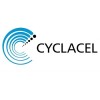
Sapacitabine, Cyclophosphamide, Rituximab for Relapsed Chronic Lymphocytic Leukemia, Small Lymphocytic...
LeukemiaThe goal of this clinical research study is to learn if sapacitabine given in combination with 2 standard drugs (cyclophosphamide and rituximab) can help to control CLL and SLL. The safety of this drug combination will also be studied.

Dasatinib for Modulating Immune System After Autologous Stem Cell Transplants for Multiple Myeloma,...
Non-Hodgkin's LymphomaMultiple3 moreThis study uses a drug called dasatinib to produce an anti-cancer effect called large granular lymphocyte cellular expansion. Large granular lymphocytes are blood cells known as natural killer cells that remove cancer cells. Researchers think that dasatinib may cause large granular lymphocyte expansion to happen in patients who have received a blood stem cell transplant (SCT) between 3 to 15 months after the blood SCT. In this research study, researchers want to find how well dasatinib can be tolerated, the best dose to take of dasatinib and to estimate how often large granular lymphocytic cellular expansion happens at the best dose of dasatinib.

Sirolimus & Mycophenolate Mofetil as GvHD Prophylaxis in Myeloablative, Matched Related Donor HCT...
Hematologic DiseasesAcute-graft-versus-host Disease3 moreA continuation study of sirolimus and mycophenolate mofetil (MMF) for graft-vs-host disease (GvHD) prophylaxis for patients undergoing matched related allogeneic hematopoietic stem cell transplantation (HSCT) for acute and chronic leukemia, myelodysplastic syndrome (MDS), high risk non-Hodgkin lymphoma (NHL), or Hodgkin lymphoma (HL)

Genes in Predicting Outcome of Patients With DLBCL Treated With Rituximab and Combination Chemotherapy...
LymphomaThe investigators hypothesize that survival of newly diagnosed DLBCL (diffuse large B-cell lymphoma) patients treated with R-CHOP can be predicted by RNA or protein gene expression or by presence of biomarkers associated with the anti-tumor effects of Rituximab.

VELCADE,Rituximab,Cyclophosphamide and Decadron
LymphomaNon-Hodgkin2 moreOverall response rate and Time to disease progression using this regimen in patients with low-grade B-Cell Non-Hodgkin's Lymphoma.

Study of Forodesine Hydrochloride in Patients With Relapsed/Refractory Precursor T-Lymphoblastic...
LeukemiaLymphomaThe purpose of this study is to determine whether Forodesine Hydrochloride is effective in treating patients with relapsed/refractory precursor T-Lymphoblastic Leukemia/Lymphoma who have failed two or more prior treatment regimens.

Ibritumomab Tiuxetan for Treatment of Non-Follicular CD20+ Indolent Lymphomas
LymphomaPrimary Objective: Overall Response Rate (ORR). Secondary Objectives: The Duration of Response (DR) and Time to Treatment Progression (TTP) in all patients and in the responders. Complete Responses (CR)/Complete Responses unconfirmed (CRu), and Partial Responses (PR). Time to next anticancer therapy (TTNT).

Phase 2 Poor Risk DLBCL of TLI and ATG Followed by Matched Allogeneic HT as Consolidation to Autologous...
LymphomaB-cell5 moreThe purpose of this study is to determine if double autologous then allogeneic hematopoietic cell transplant may offer an improved treatment option for patients with relapsed diffuse large B-cell lymphoma (DLBCL) who are not likely to be cured by the conventional transplantation regimen.

A Randomized Phase II Study of Oral Sapacitabine in Patients With Advanced Cutaneous T-cell Lymphoma...
Cutaneous T-cell Lymphoma (CTCL)This is an open label, randomized phase II study designed to evaluate the tolerability and response rate of high-dose and low-dose regimens in patients with advanced cutaneous T-cell lymphoma (CTCL).

Pilot Study of Radiation-Enhanced Allogeneic Cell Therapy for Progressive Hematologic Malignancy...
Hodgkin's LymphomaNon-Hodgkin's Lymphoma2 moreBackground: Allogeneic hematopoietic stem cell transplantation (allotransplant) has been used to treat many kinds of cancer that develop in cells from the blood or immune system. After allotransplant, donor cells take over production of the recipient s blood and immune cells, and donor immune cells can directly attack and control tumor. However, for cancers that do not respond to allotransplant, there are no proven cures. A single treatment with radiation can improve the potency of immune-cell therapies. This is probably because the tumor tissue is damaged in a way that new tumor proteins are exposed, attracting immune cells to the tumor. By giving only a single dose of radiation, the immune cells that are attracted to the tumor are allowed to survive and function in their usual way, traveling throughout the body and educating other immune cells to recognize tumor, and to activate and expand in order to kill the tumor cells. Some research has shown that radiation may have a widespread effect on stimulating the immune system, educating immune cells to recognize and control tumors that have not been radiated. Objectives: - To determine whether a single treatment of radiation will help donor immune cells control cancer after allotransplant without causing excessive side effects. Eligibility: Recipients: Individuals 18 years of age and older who have blood cancers that have not responded to allotransplant. Donors: Healthy individuals 18 years of age and older who were previous allotransplant donors for one of the study recipients. Design: Donors will provide additional blood immune cells, called lymphocytes, through apheresis. Apheresis involves drawing blood, separating out the lymphocytes, and returning the rest of the blood to the donor. Recipients will receive a single dose of radiation to the greatest amount of tumor that can be irradiated safely. Researchers will intentionally leave some tumor that will not be radiated in order to evaluate whether there is a widespread response to the treatment. There are two treatment arms on the study. Arm 1: Study participants who have donor lymphocytes available and who have not had major complications from the allotransplant will be given a dose of donor cells after they receive radiation, to provide an additional boost to the donor immune response. Arm 2: Study participants who cannot receive donor lymphocytes because their donor is not available, they received an allotransplant from a partially matched relative, or they have had significant complications from the allotransplant - will receive radiation without additional donor lymphocytes. All recipients will be followed closely for side effects and for tumor response to radiation with or without donor lymphocytes. Additional tests will be performed, including tumor biopsies, bone marrow samples, and blood draws, in order to study the immune effects of radiation and donor lymphocytes. A separate, control group of allotransplant recipients will not receive radiation. This group will include participants whose transplant doctors plan to use donor lymphocyte therapy alone to control cancer progression. This group will donate blood immune cells through blood draws and apheresis. These cells will be examined to study the immune effects of receiving donor lymphocytes without radiation.
